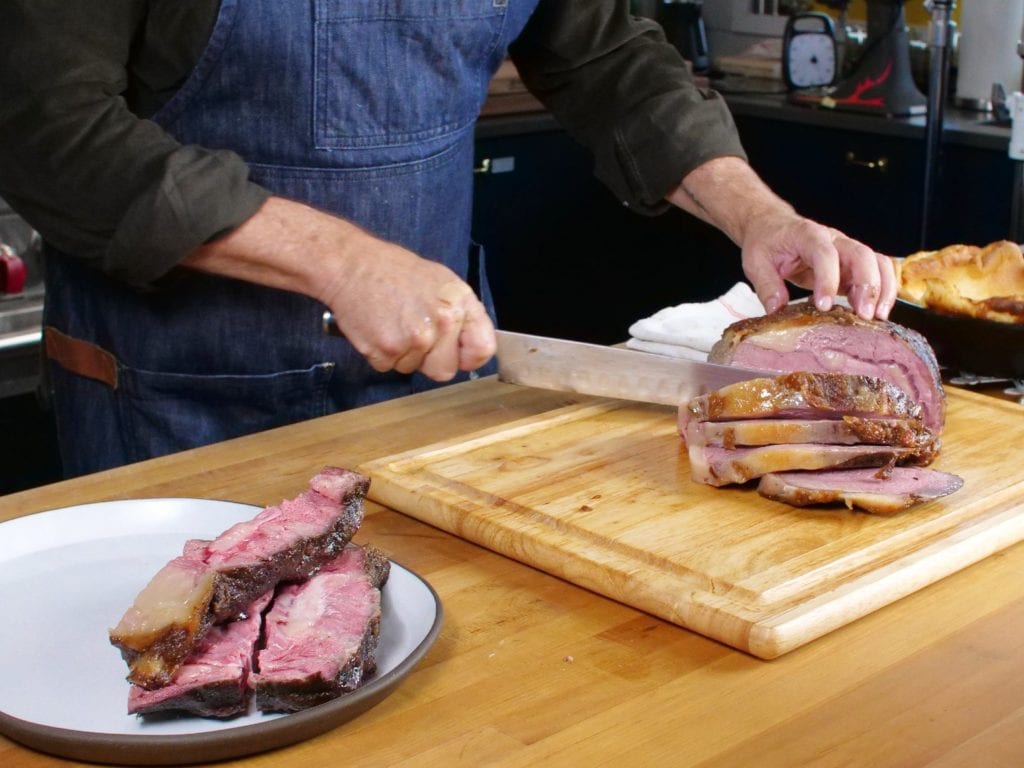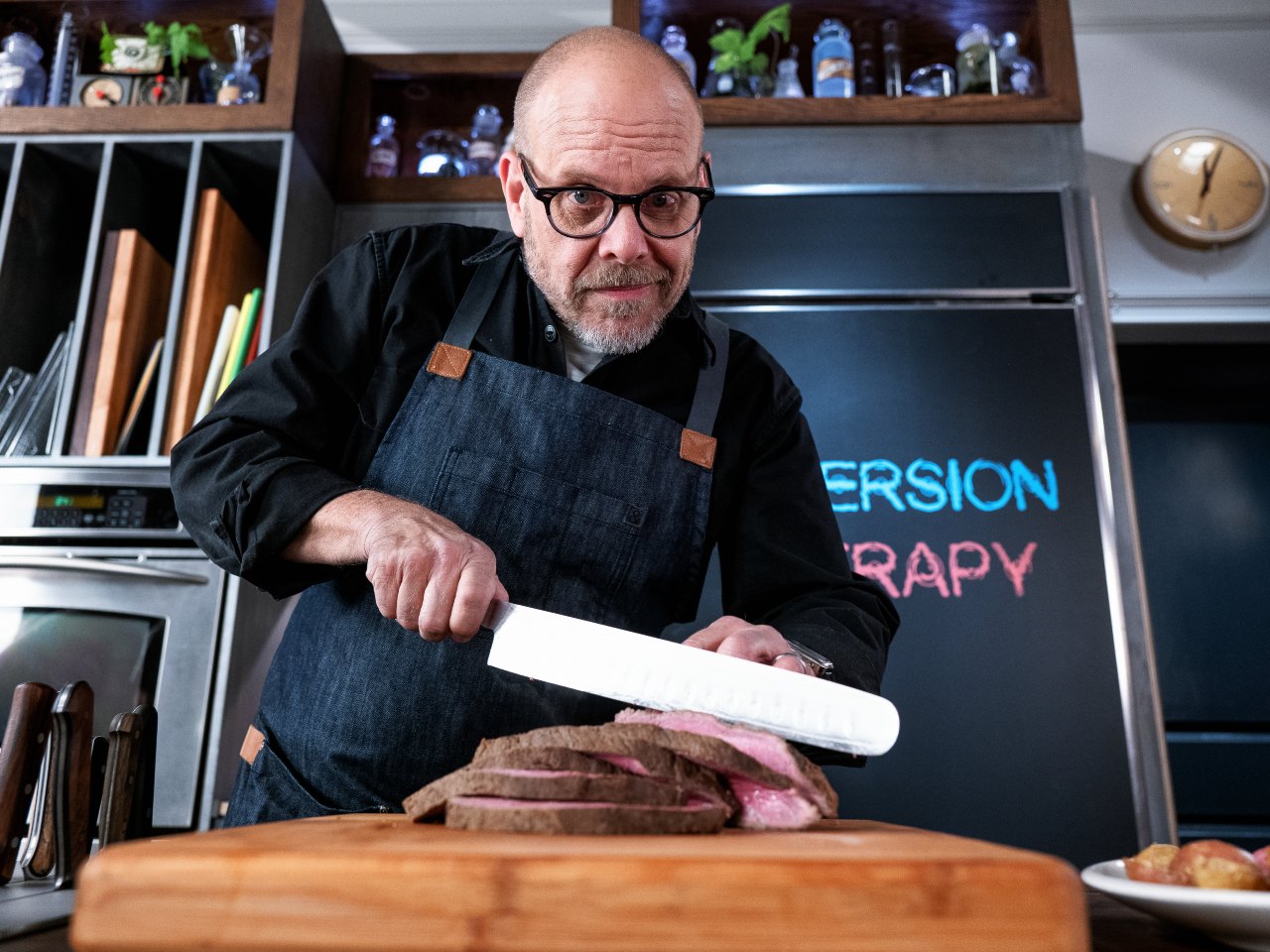
Holiday Standing Rib Roast

ACTIVE TIME: 20 minutes
TOTAL TIME: 17 hours
Yield: 6 to 10 servings
When it comes to the holidays, everyone has their favorite roast. For me, there can be only one: the standing beef rib roast. This pricy cut is often misidentified as "prime rib," and, sure, some of them are prime grade, but few are. If you can only find choice rather than prime, that's okay. Either way, it's an expensive hunk of meat, so you'll want to cook it right. Here's how I do it.
Oh, and don't forget to serve with a hot, fresh Yorkshire pudding. Note: If you would rather not "dry-age" the roast (or you forgot to plan days ahead — happens to all of us), season the meat with kosher salt, using 2 teaspoons per bone, and place on the same wire rack and sheet pan set-up described below. Let sit, uncovered in the refrigerator for at least 12 hours, or up to 24 hours, before proceeding with the recipe. You don’t need to add more salt before roasting, but you will still want to rub the roast with oil and pepper.
Read More
Read Less
Software
- 1 (3- to 4-bone) standing rib roast, preferably from the loin end, with the fat cap in place, 7 to 10 pounds
- 2 tablespoons neutral oil, to coat the roast, plus more if needed
kosher salt , 2 teaspoons per bone- 1 tablespoon
freshly ground black pepper
Specialized Hardware
remote probe thermometer
3- to 4-foot clean cheesecloth

ACTIVE TIME: 20 minutes
TOTAL TIME: 17 hours
Yield: 6 to 10 servings
Procedure
- Remove any plastic wrap or butcher's paper from the roast. If any twine is tied around the roast (running in the direction of the ribs), leave it in place for now.
Place the rib roast onto a rack set inside a half sheet pan, baking dish, etc. Airflow around the roast is key. Wrap in at least three layers of the cheesecloth, which will allow air flow while preventing the outer surface of the roast from hardening. Position the wrapped roast so that the ribs are facing downward and stash on the lower level of the refrigerator (set no lower than 34°F and no higher than 38°F) for 5 to 7 days. There’s no need to change the cheesecloth during this time. Note: Although this isn’t classical “dry aging,” which involves a lot of complex enzymatic action, this drying will remove some of the moisture from the roast thus intensifying its flavor. When you’re ready to cook, retrieve the roastYou can leave it on its rack and half sheet pan. from the refrigerator, remove and discard the cheesecloth, and rub roast with the oil. Remember to rub the bones with oil, as well. Once the roast is completely coated with oil, cover the roast with kosher salt, using about 2 teaspoons per bone, and the pepper. Let sit at room temperature for 1 hour. - Place a probe thermometer into the center of the roast and set its alarm for 118°F. Set the roast on the lower middle rack in a cold oven and turn the oven to 250°F. Let roast until the meat hits its target temperature, about 3 hours for a 3-bone roast or up to about 4 hours for a 4-bone roast. (It is more important to keep an eye on the temperature than the time here; your times may vary depending on the exact weight and shape of the roast.)
- When the thermometer alarm goes off, remove the roast from the oven, transfer to a cutting board, cover with foil, and let rest while preparing the pudding. (The roast’s internal temperature should rise up to around 130°F, then very slowly start to fall.) Pour off the drippings from the sheet pan into a heat-proof liquid measuring cup. Let the roast rest for 30 minutes. Hang on to the sheet pan and rack; you’ll use it again later.
- After 30 minutes, return the roast to the rack and sheet pan, then return to the oven. Crank the oven upas high as it will go; ideally 550°F, but 500°F will also work, and cook until the exterior of the roast is browned, 10 to 15 minutes, depending on how hot you can get your oven to run.
- Return the roast to the board, carve, and serve with Yorkshire pudding. And no, you don’t need to rest it again.
Alton independently selects these products—if you buy from one of our links, we may earn a commission from the brand.







